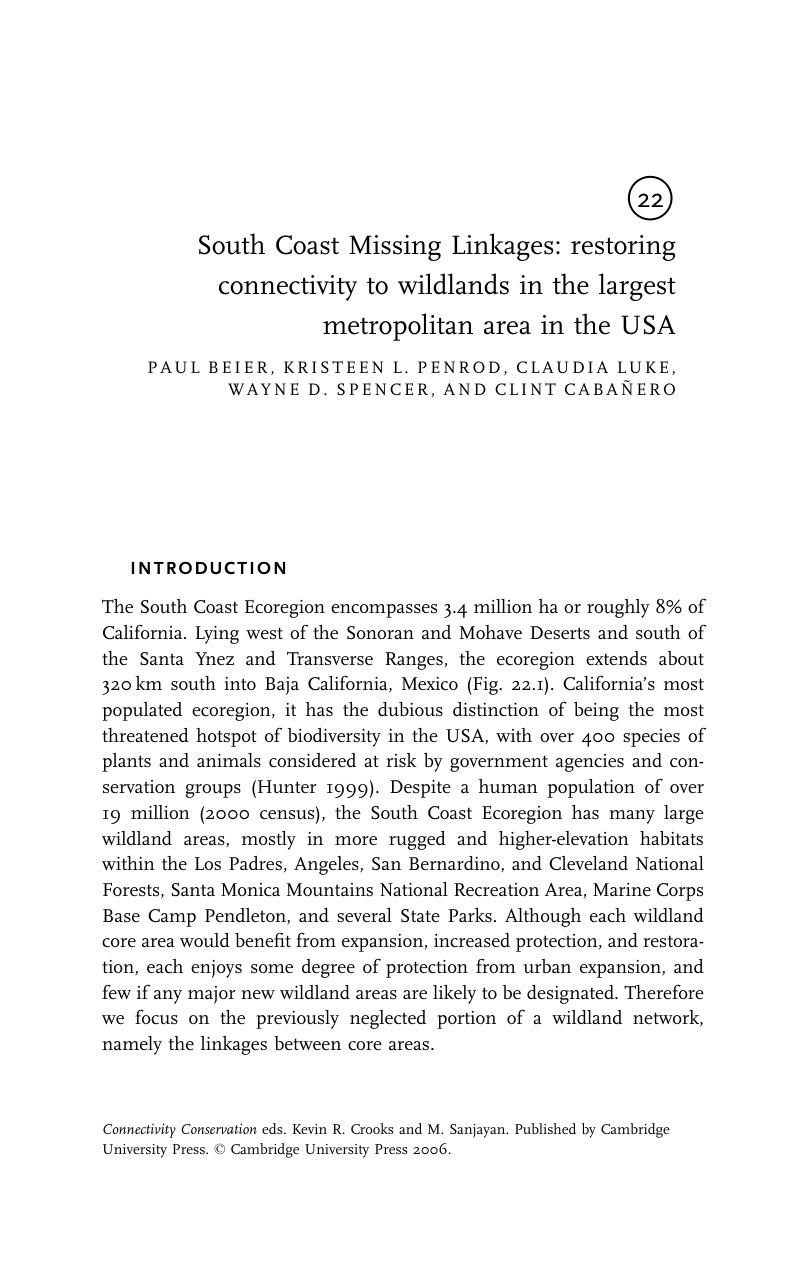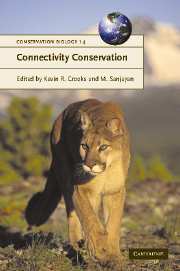Book contents
- Frontmatter
- Contents
- List of contributors
- Acknowledgements
- 1 Connectivity conservation: maintaining connections for nature
- PART I Approaches to connectivity research
- PART II Assessing connectivity
- PART III Challenges and implementation of connectivity conservation
- Introduction: Don't fence me in
- 18 Hyperconnectivity, invasive species, and the breakdown of barriers to dispersal
- 19 Disease and connectivity
- 20 Maintaining and restoring connectivity in landscapes fragmented by roads
- 21 Where to draw the line: integrating feasibility into connectivity planning
- 22 South Coast Missing Linkages: restoring connectivity to wildlands in the largest metropolitan area in the USA
- 23 Incorporating connectivity into broad-scale conservation planning
- 24 Escaping the minimalist trap: design and implementation of large-scale biodiversity corridors
- 25 The role of connectivity in Australian conservation
- 26 The future of connectivity conservation
- Index
- References
22 - South Coast Missing Linkages: restoring connectivity to wildlands in the largest metropolitan area in the USA
Published online by Cambridge University Press: 24 May 2010
- Frontmatter
- Contents
- List of contributors
- Acknowledgements
- 1 Connectivity conservation: maintaining connections for nature
- PART I Approaches to connectivity research
- PART II Assessing connectivity
- PART III Challenges and implementation of connectivity conservation
- Introduction: Don't fence me in
- 18 Hyperconnectivity, invasive species, and the breakdown of barriers to dispersal
- 19 Disease and connectivity
- 20 Maintaining and restoring connectivity in landscapes fragmented by roads
- 21 Where to draw the line: integrating feasibility into connectivity planning
- 22 South Coast Missing Linkages: restoring connectivity to wildlands in the largest metropolitan area in the USA
- 23 Incorporating connectivity into broad-scale conservation planning
- 24 Escaping the minimalist trap: design and implementation of large-scale biodiversity corridors
- 25 The role of connectivity in Australian conservation
- 26 The future of connectivity conservation
- Index
- References
Summary

- Type
- Chapter
- Information
- Connectivity Conservation , pp. 555 - 586Publisher: Cambridge University PressPrint publication year: 2006
References
- 45
- Cited by

